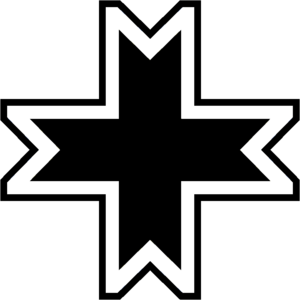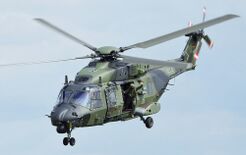Reichswehr: Difference between revisions
No edit summary |
No edit summary |
||
| (One intermediate revision by the same user not shown) | |||
| Line 19: | Line 19: | ||
| headquarters = Thielfurt, Litzstädt, and Neu-Ulmersburg | | headquarters = Thielfurt, Litzstädt, and Neu-Ulmersburg | ||
| flying_hours = | | flying_hours = | ||
| website = | | website = [https://www.youtube.com/watch?v=dQw4w9WgXcQ| reichswehr.lw] | ||
<!-- Leadership -->| commander-in-chief = {{plainlist| | <!-- Leadership -->| commander-in-chief = {{plainlist| | ||
* Ministry of Defence | * Ministry of Defence | ||
| Line 75: | Line 75: | ||
A strong arms industry and a sizable military budget means Lützow has a very modern military. The Reichswehr possesses over 2000 Armored Fighting Vehicles, 500 Aircraft and 50 larger ships. The armed forces can be deployed around Trica in a short amount of time, and can deploy nuclear weapons anywhere in the world if so needed by air plane, cruise missile or ballastic missile. | A strong arms industry and a sizable military budget means Lützow has a very modern military. The Reichswehr possesses over 2000 Armored Fighting Vehicles, 500 Aircraft and 50 larger ships. The armed forces can be deployed around Trica in a short amount of time, and can deploy nuclear weapons anywhere in the world if so needed by air plane, cruise missile or ballastic missile. | ||
[[File:Image 2024-10-27 004032464.png|border|thumb|237x237px|PGW Kojote]] | [[File:Image 2024-10-27 004032464.png|border|thumb|237x237px|PGW Kojote]] | ||
[[File:GZJeDo4.jpg|left|thumb|245x245px|J-16 Fighter]] | [[File:GZJeDo4.jpg|left|thumb|245x245px|J-16 "Greif" Fighter]] | ||
[[File:TH-95.jpg|center|thumb|246x246px|TH-95 Helicopter]] | [[File:TH-95.jpg|center|thumb|246x246px|TH-95 "Phyton" Helicopter]] | ||
{{DEFAULTSORT:Lützow's Reichswehr}} | {{DEFAULTSORT:Lützow's Reichswehr}} | ||
Latest revision as of 20:00, 27 October 2024
| Realm Defence Forces | |
|---|---|
| Reichswehr | |
| Motto | Für Volk und Vaterland! ("For people and fatherland!") |
| Founded | 27 January 1832 |
| Service branches |
|
| Headquarters | Thielfurt, Litzstädt, and Neu-Ulmersburg |
| Website | reichswehr.lw |
| Leadership | |
| Commander-in-Chief |
(during peactime)
|
| Defence Minister | Ulrich von Haugen |
| Chief of the Armed Forces | Georg Thiele |
| Personnel | |
| Military age | 18 |
| Conscription | Yes, but partially suspended since 2000 |
| Active personnel | 375.450 (2024) |
| Reserve personnel | 450.000 (2024) |
| Expenditure | |
| Budget | 67.658 billion 𝔊𝔐 (2024) |
The Reichswehr (literally Realm/Empire Defence) is the armed forces of the Empire of Lützow. The Reichswehr is divided into a military part (armed forces or Streitkräfte) and a civil part, the military part consisting of the Lützowan Army, the Lützowan Navy, the Lützowan Air Force, the Joint Support Service, the Joint Medical Service, and the Cyber and Information Domain Service. As of 25 September 2024, the Reichswehr had a strength of 375.450 active-duty military personnel and 120.000, placing it among the largest military forces in the world. In addition, the Reichswehr has approximately 450.000 reserve personnel (as of 2024), with a large part also being organized in home defence (Heimwehr) units or in free corps (Freikorps). With Lützowan military expenditures at 67.658 billion 𝔊𝔐 (2024), the Reichswehr is one of the highest-funded military in the world. Lützow plans to increase the Reichswehr to around 390.000 soldiers. Combined with the huge arms manufacturing industry, the armed forces of Lützow is one of the most modern and best trained militaries of the world.
Until 2000, military service was compulsory for men at age 18, but this has been partially suspended and replaced with a voluntary service, tho joining the armed froces is highly encouraged in schools with some schools having a Reichswehr club. Since 1996 women may serve in all functions of service without restriction.
Organisation
In peacetime, the Reichswehr is commanded by the Minister of Defence. In state of defence, the Prime Minister would become commander-in-chief of the Reichswehr. Up until 1998 the Emperor became commander-in-chief of the Reichswehr in a state of defence. The role of the Reichswehr is described in the Constitution of Lützow as focused on self-defensive only but is not restricted to it and may protect Lützow's interests anywhere in Trica.
History of organisation
The Reichswehr has been reorganized throughout it's history with the first happening in the 1860s, intergrating all the state's armies to one unified Lützowan army. The next major reorganisation was in the 1920s when newer technology required a over all restructuring and rethinking previous strategies. Only 30 years later came the next reorganisation with even newer technological advancements, like the Anti-Tank missile, helicopters, faster aircraft, nuclear bombs and even better equipment for the average soldier. Reforms and restructuring happened every 10-15 years after that. A end was put to constant restructuring in the 1990's with a final reform plan preparing the Reichswehr till atleast 2030 and only minor changes were to be made. This plan was proposed by Fieldmarshall Richard von Scheel and is why it is known as the Scheel Plan.
Senior leadership
The Minister of Defence is supported by the Chief of the Armed Forces (CHAF, OdR, Oberbefehlshaber der Reichswehr) and the service chiefs (Befehlashaber: Chief of the Army, Chief of the Air Force, Chief of the Navy) and their respective staffs in his or her function as commander-in-chief. The CHAF and the service chiefs form the Highest Military Command (Höchstes Oberkommando). Subordinate to the CHAF is the Armed Forces Operational Command (Einsatzführungskommando). For smaller missions one of the service HQs (e.g. the Fleet Command) may exercise command and control of forces in missions abroad. The Reichstag and Kaiser, must approve any foreign deployment by a simple majority.
Appearance
Uniforms
The service uniform is theoretically the standard type of Reichswehr uniform for general duty and off-post activity, but is most associated with ceremonial occasions. The army's service uniform consists of a light grey, single-breasted coat and darker grey trousers, worn with a light blue shirt, black tie, and black shoes. The peaked, visored cap has been replaced by the beret as the most common form of headgear.Dress uniforms featuring dinner jackets or double-breasted coats are worn by officers for various social occasions.
The battle and work uniform consists of Flecktarn camouflage fatigues, which are also worn on field duty. In practice, they are also used for general duty and off-post at least at barracks where there is also field duty even by others, and for the way home or to the post, and generally regarded as the Heer uniform. In all three services, light sand-coloured uniforms are available for duty in warmer climates.
A different, traditional variety of the service uniform is worn by the Gebirgsjäger (mountain infantry), consisting of ski jacket, stretch trousers, and ski boots. Instead of the beret, they wear the grey "mountain cap". The field uniform is the same, except for the (optional) metal Edelweiss worn on the forage cap.
The naval forces wear the traditional navy blue, double-breasted coat and trousers; enlisted personnel wear either a white shirt or a navy blue shirt with the traditional navy collar. White uniforms provide an alternative for summer. The officer's dress cap is mounted with a gold anchor surrounded by a wreath. The visor of the admiral's cap bears a double row of oak leaves. U-boat captains wear the traditional white hat.
The air force service uniform consists of a blue jacket and trousers with a light blue shirt, dark blue tie, and black shoes. Olive battle dress similar to the army fatigue uniform is worn in basic training and during other field duty. Flying personnel wear wings on their right breast. Other air force personnel wear a modified wing device with a symbol in its centre denoting service specialisation. These Tätigkeitsabzeichen come in bronze, silver, or gold, depending on one's length of service in the specialty. Wings, superimposed over a wreath, in gold, silver, or bronze, depending on rank, are also worn on the service or field cap.
Equipment
A strong arms industry and a sizable military budget means Lützow has a very modern military. The Reichswehr possesses over 2000 Armored Fighting Vehicles, 500 Aircraft and 50 larger ships. The armed forces can be deployed around Trica in a short amount of time, and can deploy nuclear weapons anywhere in the world if so needed by air plane, cruise missile or ballastic missile.



